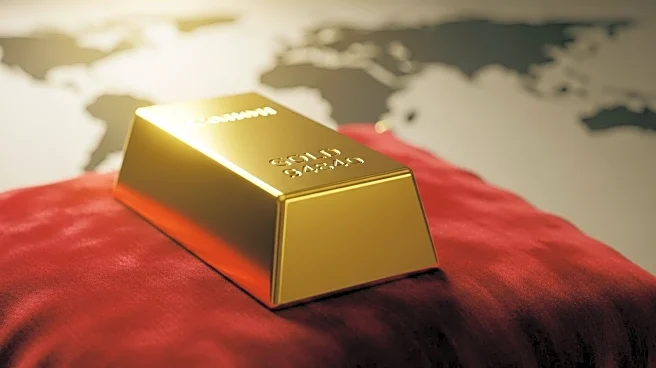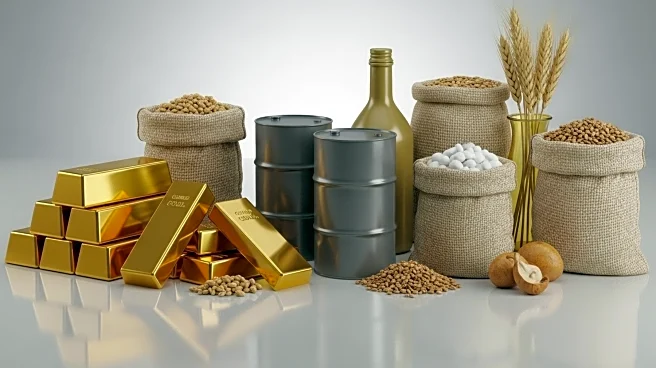What's Happening?
Gold prices have reached a record high, surpassing $4,200 per ounce for the first time, as equity markets remain volatile. On October 15, 2025, gold's price peaked at $4,217.95 per ounce before settling
at $4,205.00. This surge is attributed to investors seeking safety amid macroeconomic and geopolitical uncertainties, coupled with expectations of further interest rate cuts by the U.S. Federal Reserve. Central banks, particularly in China, are also contributing to the price increase through significant gold purchases. The trend of de-dollarization and inflows into gold ETFs, such as SPDR Gold Shares, are further boosting gold's value.
Why It's Important?
The record high in gold prices underscores the metal's role as a hedge against economic uncertainty and inflation. As a non-yielding asset, gold thrives in low interest rate environments, making it attractive to investors during periods of market volatility. The increased demand from central banks and the shift away from the U.S. dollar highlight broader economic trends that could impact global financial stability. This development is significant for investors, policymakers, and financial institutions, as it may influence monetary policy decisions and investment strategies.
What's Next?
Analysts predict that if the current pace of gold buying continues, prices could reach $5,000 per ounce by the end of 2025 or early 2026. Investors will likely keep a close watch on interest rate policies and geopolitical developments that could affect gold's appeal as a safe haven asset. The ongoing trend of de-dollarization and central bank purchases will be key factors in determining future price movements. Stakeholders in the financial markets will need to adapt their strategies to navigate these evolving conditions.











